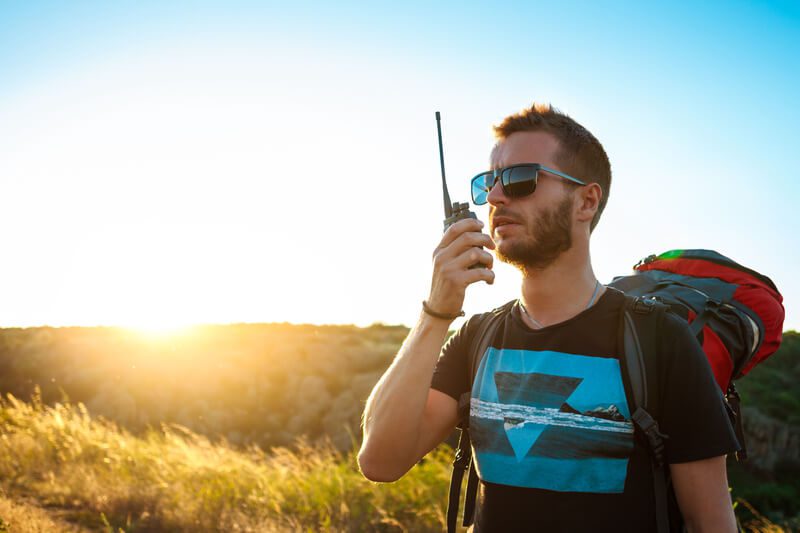A disaster preparedness plan may seem paranoid to most civilians, and like something that only the authorities need to carry out.
But the truth is this: talk to someone who has experienced a real-life disaster and you’ll hear a common answer popping out: “I wish I had been prepared.”
Although disasters are not always predictable, building a disaster preparedness plan will help you deal with the disasters most likely to occur in your area.
And trust me, you and your family will be glad to have prepared when the time comes.
So if you want to be the survivalist in any outcome you may face, stick with us throughout this guide. You won’t regret it.
What is Disaster Preparedness Plan?
Disaster preparedness refers to the readiness to act according to a plan previously made to overcome a crisis of any sort.
There are many kinds of crises, like man-made (chemical weapons, wars, criminal fires, etc) or nature-caused (forest fires, floods, earthquakes, etc).
Therefore, a disaster preparedness plan should map all possible crises that could happen in the region and provide an answer to all possible consequences proactively.
But it would be nonsense to create a disaster preparedness plan for every one of those, considering not all apply to your reality.
If there’s a myth out there in the outdoor and survivalism world, is that ‘’do-it-all’’ recipe that serves every scenario.
Here, when we mean ‘’ready for any outcome’’, what we intend is for you to get ready for any possible outcome you’re likely to face with our help.
For instance, it wouldn’t make any logical sense for a survivalist in Alaska to plan for a drought scenario.
All considered, it’s time to show the step-by-step guide for you to create your own disaster preparedness plan.
#1 Include all family members in the conversation
For all the matters we’re seeing ahead, it’s fundamental to include every family member in the disaster preparedness plan’s conversation.
A crisis scenario will impose high stress and very difficult circumstances that one unprepared might not endure, not only on a physical level, but mental.
That’s why including everyone and acknowledging them previously about what you might pass together, what each family member will have to do, and so on, will already be a huge step towards a successful disaster preparedness plan.
Remember that survivalism starts with the right mentality.
#2 Identify the most likely scenarios
As we anticipated before, there’s no sense in preparing for everything: a reason for which mapping the most likely scenarios in your reality is crucial.
In order to do that, you might want to take a look at the news (whether the local news or specialized civil defense authorities channels).
Don’t underestimate the importance of digging deeper into the geography of your area and its history.
Besides, talk to the locals to understand past crises that might have taken place in the past.
Knowledge is never too much when you’re creating a functional disaster preparedness plan.
To sum up, ask yourself these core questions that should help you in this stage of the planning:
- What crises are most likely to emerge in my area?
- How do I prepare for it?
- What resources do I need to overcome it?
- Do I have an up-to-date survival kit and all the necessary gear I’ll need?
Once you’re done with it, it’s time to think of another vital part of your plan: communication.
#3 Ensure communication

Ensuring communication with your family members while in a crisis is a highly important necessity and is often overlooked.
As we’re going to explore further, a crisis scenario might strike while, for example, you are at work, your wife is at her work, and your kids are at school.
In this hypothetical case, how would you ensure you can all communicate?
What if one of them has a dead phone or the area is suddenly off?
That’s when the plan begins to work.
Ensuring everyone has a power bank in their EDC (Every Day Carry) kits or even a walkie-talkie should likely fix those problems.
Additionally, you could dig into LoRa (Long Range radio) solutions to ensure long-distance functional communication in a drastic scenario where modern smartphones aren’t useful.
We’ll explore that rising technology in the future.
Don’t forget to ensure yourself a means to hear emergency alerts and warnings from authorities.
A classic portable radio should do, but keep it usable over time, and get yourself extra batteries always.
#4 Consider being separated
If you and your family are split when the crisis strikes, what will all of you do?
That’s a hard call to get, but essential to plan for.
Once all family members are aware of the plan, know the likely crises to prepare for, and are all communicable, it’s time to think of this hypothesis.
That’s when these are important factors to count in your disaster plan:
- If a crisis imposes to escape, what escape route should you and your family take?
- If escaping is the right answer, what should be the meeting point considering everyone’s split?
That will certainly optimize your reaction time in a high-stress situation and increase the survival chances of every family member.
#5 Practice your disaster preparedness plan with a minimal frequency
Once you have gotten your plan together, it’s time to test it.
Discuss it deeply with your family and put it to the test with a minimal frequency (for example, once every 3 months).
According to Nikolay V. Kukushkin, New York University’s Lead Author on a study on the nuances of memory formation:
“Repetition is a well-documented trigger for memory formation—the more times something is repeated, the better it is remembered”.
Furthermore, have you noticed how power grid breakdowns can shift our lives upside down in the blink of an eye?
In fact, in most crisis scenarios, we’ll all find ourselves not being able to rely on most of our modern devices and daily technologies, such as smartphones or even the internet.
That’s why having some knowledge in physical form is still a very important asset.
Thinking of that, we prepared you a Fundamental B.O.B. (Bug Out Bag) Checklist that you should keep printed to ensure you have the essentials when evacuating.
Click here to get it 100% free!
We thank you for your company this far, survivalist.
See you in the field!


